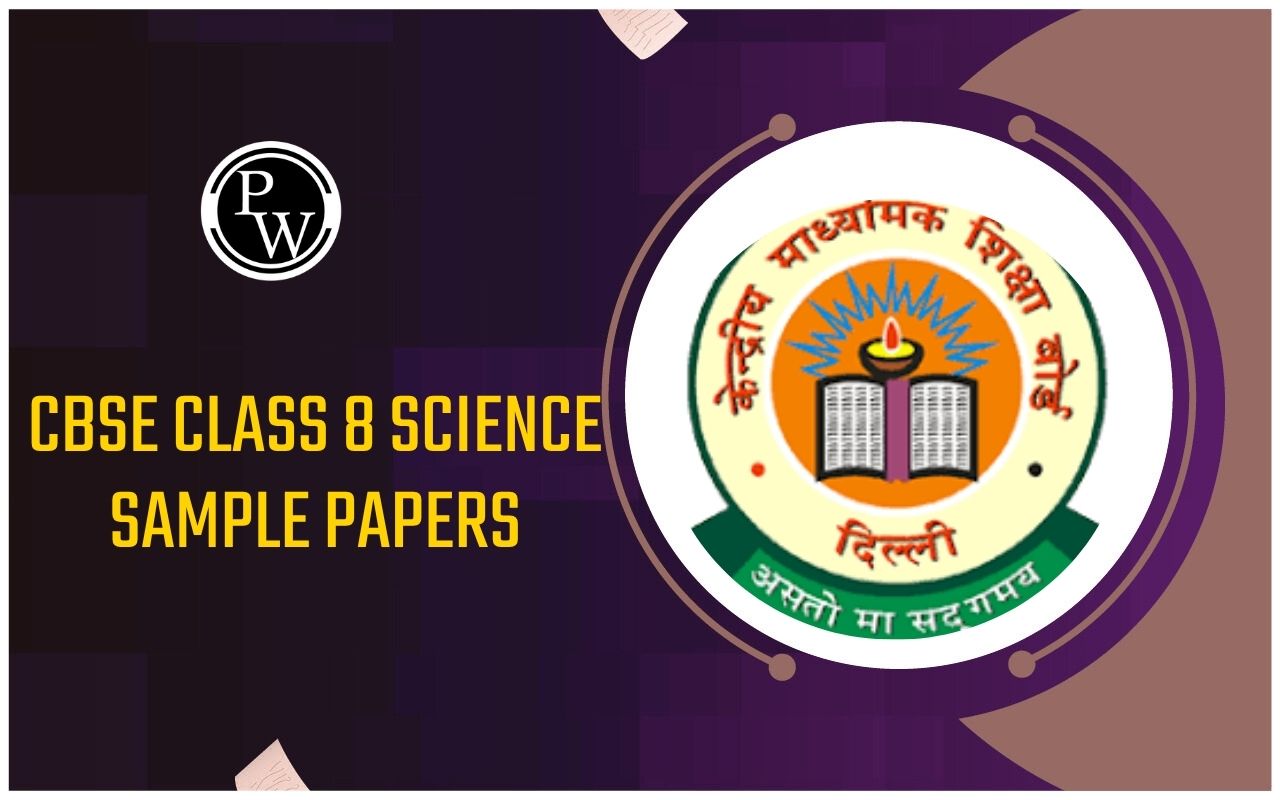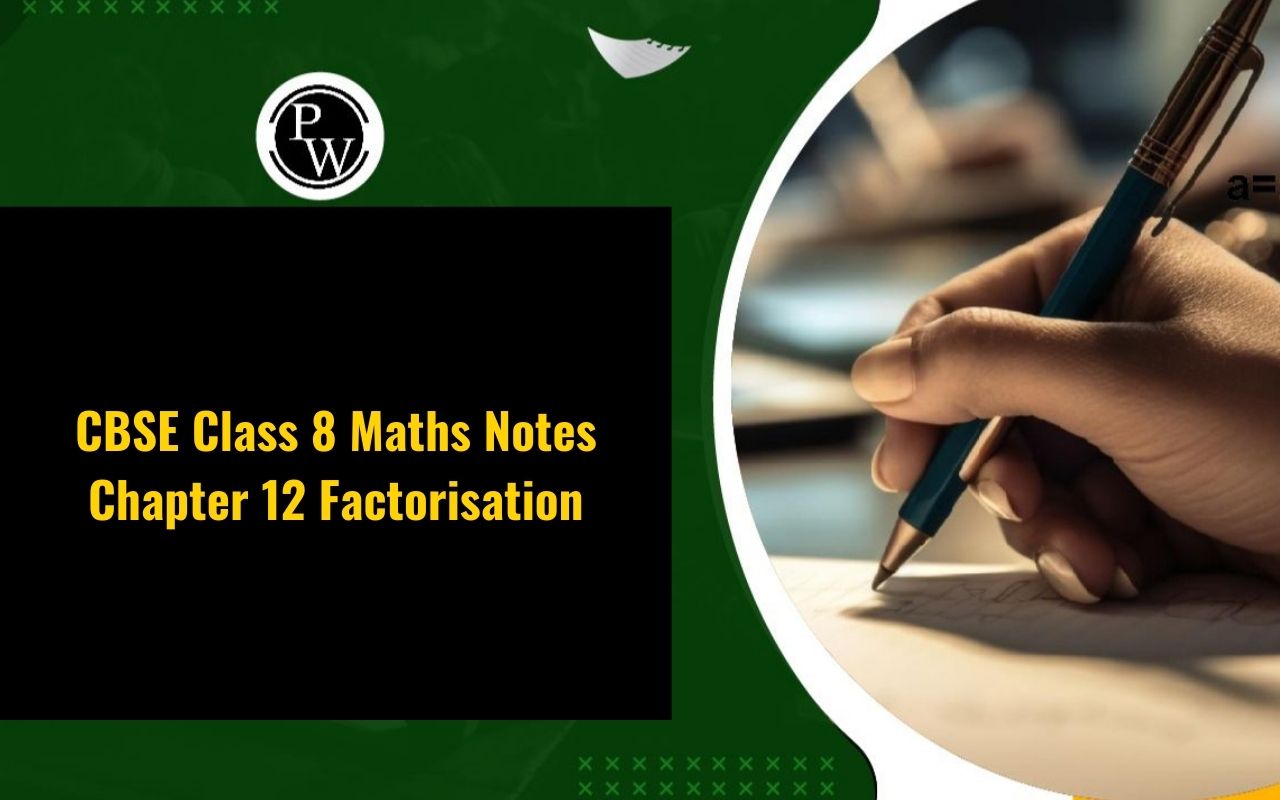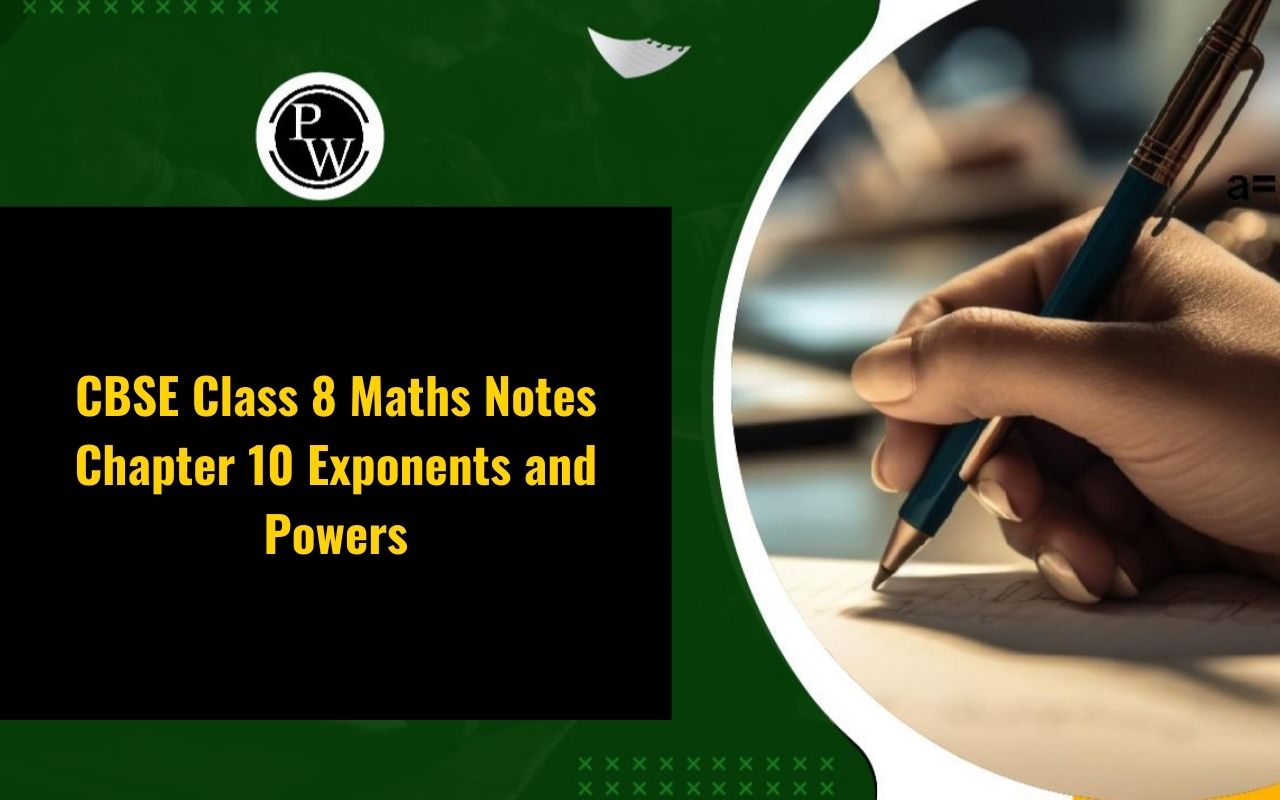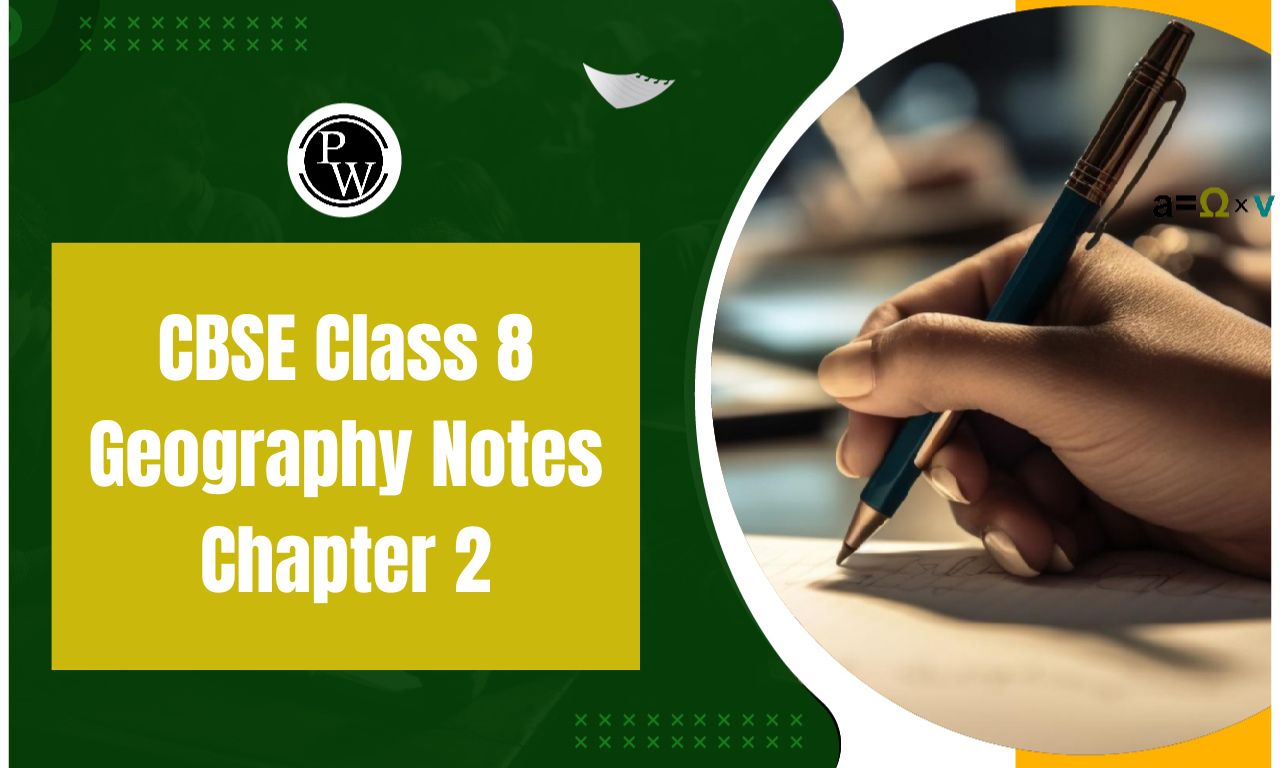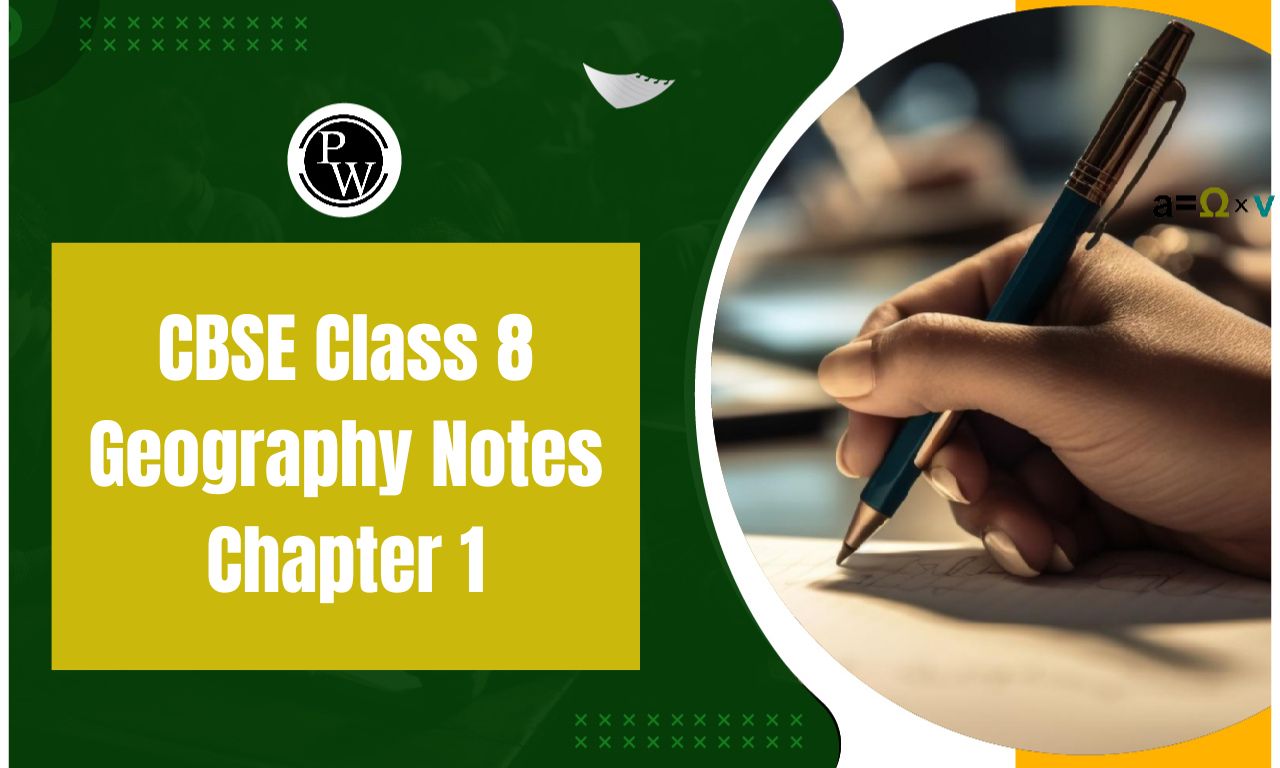
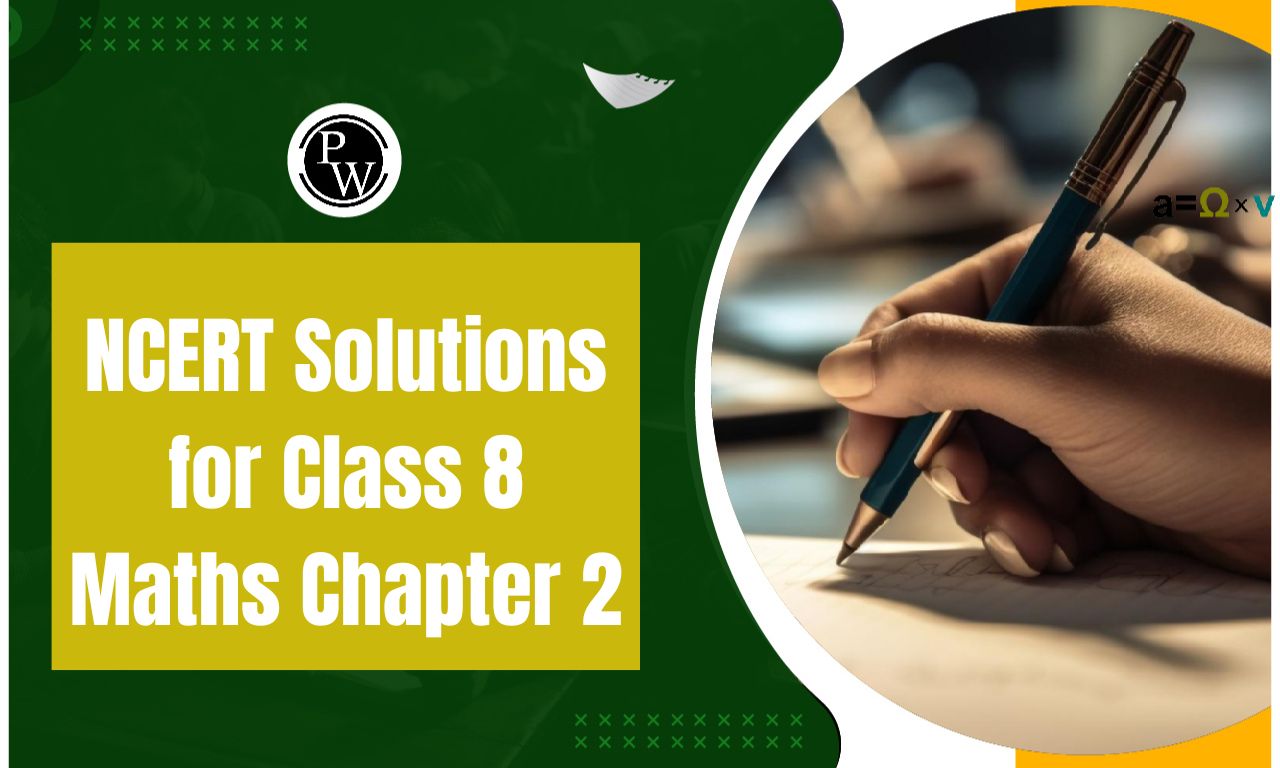
NCERT Solutions for Class 8 Maths Chapter 2: NCERT Solutions for Class 8 Maths Chapter 2, Linear Equations in One Variable, provide step-by-step explanations to solve linear equations with one unknown variable. This chapter covers important concepts like transposing terms, balancing equations, and simplifying expressions to find the value of the variable.
Students learn to solve problems related to real-life situations, such as age, number, and money problems, using linear equations. The solutions emphasize the importance of systematic calculations and logical reasoning, helping students build a strong foundation in algebra.NCERT Solutions for Class 8 Maths Chapter 2 Overview
The NCERT Solutions for Class 8 Maths Chapter 2, Linear Equations in One Variable, provide a comprehensive approach to solving equations involving one unknown variable. This chapter introduces the concept of linear equations and explains methods to solve them by simplifying and balancing both sides of the equation. Key topics covered include the solution of equations having linear expressions on one side or both sides, equations with variables on both sides, and the application of these methods to real-life problems, such as word problems involving age, money, distance, and work.The chapter helps students understand how to form and solve linear equations using transposition, addition, subtraction, multiplication, and division. Through examples and exercises, students learn how to deal with equations with fractional coefficients, how to cross-multiply, and how to systematically eliminate variables to find the solution.
NCERT Solutions for Class 8 Maths Chapter 2 PDF Download
These solutions are designed to make concepts easy and accessible, ensuring students can tackle any problem related to linear equations in one variable. They also strengthen problem-solving skills, logical thinking, and mathematical understanding, building a solid foundation for higher classes. Hence, here we have provided NCERT Solutions for Class 8 Maths Chapter 2 Linear Equations in One Variable pdf -NCERT Solutions for Class 8 Maths Chapter 2 PDF
NCERT Solutions for Class 8 Maths Chapter 2 Exercises Linear Equations in One Variable
Below we have provided NCERT Solutions for Class 8 Maths Chapter 2 Linear Equations in One Variable for the ease of students -NCERT Solutions for Class 8 Maths Chapter 2 Exercise 2.1
Solve the following equations.
1. x – 2 = 7
Solution: x – 2 = 7 x=7+2 x = 92. y + 3 = 10
Solution: y + 3 = 10 y = 10 –3 y = 73. 6 = z + 2
Solution: 6 = z + 2 z + 2 = 6 z = 6-2 z = 44. 3/7 + x = 17/7
Solution: 3/7 + x = 17/7 x = 17/7 – 3/7 x = 14/7 x = 25. 6x = 12
Solution: 6x = 12 x = 12/6 x = 26. t/5 = 10
Solution: t/5 = 10 t = 10 × 5 t = 507. 2x/3 = 18
Solution: 2x/3 = 18 2x = 18 × 3 2x = 54 x = 54/2 x = 278. 1.6 = y/15
Solution: 1.6 = y/1.5 y/1.5 = 1.6 y = 1.6 × 1.5 y = 2.49. 7x – 9 = 16
Solution: 7x – 9 = 16 7x = 16+9 7x = 25 x = 25/710. 14y – 8 = 13
Solution: 14y – 8 = 13 14y = 13+8 14y = 21 y = 21/14 y = 3/211. 17 + 6p = 9
Solution: 17 + 6p = 9 6p = 9 – 17 6p = -8 p = -8/6 p = -4/312. x/3 + 1 = 7/15
Solution: x/3 + 1 = 7/15 x/3 = 7/15 – 1 x/3 = (7 -15)/15 x/3 = -8/15 x = -8/15 × 3 x = -8/5NCERT Solutions for Class 8 Maths Chapter 2 Exercise 2.2
1. If you subtract ½ from a number and multiply the result by ½, you get 1/8. What is the number?
Solution: Let the number be x. According to the question, (x – 1/2) × ½ = 1/8 x/2 – ¼ = 1/8 x/2 = 1/8 + ¼ x/2 = 1/8 + 2/8 x/2 = (1+ 2)/8 x/2 = 3/8 x = (3/8) × 2 x = ¾2. The perimeter of a rectangular swimming pool is 154 m. Its length is 2 m, more than twice its breadth. What are the length and breadth of the pool?
Solution: Given that, The perimeter of the rectangular swimming pool = 154 m. Let the breadth of the rectangle be = x According to the question, Length of the rectangle = 2x + 2 We know that, Perimeter = 2(length + breadth) ⇒ 2(2x + 2 + x) = 154 m ⇒ 2(3x + 2) = 154 ⇒ 3x +2 = 154/2 ⇒ 3x = 77 – 2 ⇒ 3x = 75 ⇒ x = 75/3 ⇒ x = 25 m Therefore, Breadth = x = 25 cm Length = 2x + 2 = (2 × 25) + 2 = 50 + 2 = 52 m 3. The base of an isosceles triangle is 4/3 cm. The perimeter of the triangle is  cm. What is the length of either of the remaining equal sides?
cm. What is the length of either of the remaining equal sides?
 image cm = 62/15 Let the length of equal sides of the triangle be x. According to the question, 4/3 + x + x = 62/15 cm ⇒ 2x = (62/15 – 4/3) cm ⇒ 2x = (62 – 20)/15 cm ⇒ 2x = 42/15 cm ⇒ x = (42/30) × (½) ⇒ x = 42/30 cm ⇒ x = 7/5 cm The length of either of the remaining equal sides is 7/5 cm.
image cm = 62/15 Let the length of equal sides of the triangle be x. According to the question, 4/3 + x + x = 62/15 cm ⇒ 2x = (62/15 – 4/3) cm ⇒ 2x = (62 – 20)/15 cm ⇒ 2x = 42/15 cm ⇒ x = (42/30) × (½) ⇒ x = 42/30 cm ⇒ x = 7/5 cm The length of either of the remaining equal sides is 7/5 cm.
4. Sum of two numbers is 95. If one exceeds the other by 15, find the numbers.
Solution: Let one of the numbers be = x. Then, the other number becomes x + 15. According to the question, x + x + 15 = 95 ⇒ 2x + 15 = 95 ⇒ 2x = 95 – 15 ⇒ 2x = 80 ⇒ x = 80/2 ⇒ x = 40 First number = x = 40 And, other number = x + 15 = 40 + 15 = 555. Two numbers are in the ratio 5:3. If they differ by 18, what are the numbers?
Solution: Let the two numbers be 5x and 3x. According to the question, 5x – 3x = 18 ⇒ 2x = 18 ⇒ x = 18/2 ⇒ x = 9 Thus, The numbers are 5x = 5 × 9 = 45 And 3x = 3 × 9 = 27.6. Three consecutive integers add up to 51. What are these integers?
Solution: Let the three consecutive integers be x, x+1 and x+2. According to the question, x + (x+1) + (x+2) = 51 ⇒ 3x + 3 = 51 ⇒ 3x = 51 – 3 ⇒ 3x = 48 ⇒ x = 48/3 ⇒ x = 16 Thus, the integers are x = 16 x + 1 = 17 x + 2 = 187. The sum of three consecutive multiples of 8 is 888. Find the multiples.
Solution: Let the three consecutive multiples of 8 be 8x, 8(x+1) and 8(x+2). According to the question, 8x + 8(x+1) + 8(x+2) = 888 ⇒ 8 (x + x+1 + x+2) = 888 (Taking 8 as common) ⇒ 8 (3x + 3) = 888 ⇒ 3x + 3 = 888/8 ⇒ 3x + 3 = 111 ⇒ 3x = 111 – 3 ⇒ 3x = 108 ⇒ x = 108/3 ⇒ x = 36 Thus, the three consecutive multiples of 8 are: 8x = 8 × 36 = 288 8(x + 1) = 8 × (36 + 1) = 8 × 37 = 296 8(x + 2) = 8 × (36 + 2) = 8 × 38 = 3048. Three consecutive integers are such that when they are taken in increasing order and multiplied by 2, 3 and 4, respectively, they add up to 74. Find these numbers.
Solution: Let the three consecutive integers be x, x+1 and x+2. According to the question, 2x + 3(x+1) + 4(x+2) = 74 ⇒ 2x + 3x +3 + 4x + 8 = 74 ⇒ 9x + 11 = 74 ⇒ 9x = 74 – 11 ⇒ 9x = 63 ⇒ x = 63/9 ⇒ x = 7 Thus, the numbers are: x = 7 x + 1 = 8 x + 2 = 99. The ages of Rahul and Haroon are in the ratio 5:7. Four years later, the sum of their ages will be 56 years. What are their present ages?
Solution: Let the ages of Rahul and Haroon be 5x and 7x. Four years later, The ages of Rahul and Haroon will be (5x + 4) and (7x + 4), respectively. According to the question, (5x + 4) + (7x + 4) = 56 ⇒ 5x + 4 + 7x + 4 = 56 ⇒ 12x + 8 = 56 ⇒ 12x = 56 – 8 ⇒ 12x = 48 ⇒ x = 48/12 ⇒ x = 4 Therefore, Present age of Rahul = 5x = 5×4 = 20 And, present age of Haroon = 7x = 7×4 = 2810. The number of boys and girls in a class is in the ratio of 7:5. The number of boys is 8 more than the number of girls. What is the total class strength?
Solution: Let the number of boys be 7x, and girls be 5x. According to the question, 7x = 5x + 8 ⇒ 7x – 5x = 8 ⇒ 2x = 8 ⇒ x = 8/2 ⇒ x = 4 Therefore, number of boys = 7×4 = 28 And, number of girls = 5×4 = 20 Total number of students = 20+28 = 4811. Baichung’s father is 26 years younger than Baichung’s grandfather and 29 years older than Baichung. The sum of the ages of all the three is 135 years. What is the age of each one of them?
Solution: Let the age of Baichung’s father be x. Then, the age of Baichung’s grandfather = (x+26) and, the age of Baichung = (x-29). According to the question, x + (x+26) + (x-29) = 135 ⇒ 3x + 26 – 29 = 135 ⇒ 3x – 3 = 135 ⇒ 3x = 135 + 3 ⇒ 3x = 138 ⇒ x = 138/3 ⇒ x = 46 Age of Baichung’s father = x = 46 Age of Baichung’s grandfather = (x+26) = 46 + 26 = 72 Age of Baichung = (x-29) = 46 – 29 = 1712. Fifteen years from now, Ravi’s age will be four times his present age. What is Ravi’s present age?
Solution: Let the present age of Ravi be x. Fifteen years later, Ravi’s age will be x+15 years. According to the question, x + 15 = 4x ⇒ 4x – x = 15 ⇒ 3x = 15 ⇒ x = 15/3 ⇒ x = 5 Therefore, the present age of Ravi = 5 years.13. A rational number is such that when you multiply it by 5/2 and add 2/3 to the product, you get -7/12. What is the number?
Solution: Let the rational be x. According to the question, x × (5/2) + 2/3 = -7/12 ⇒ 5x/2 + 2/3 = -7/12 ⇒ 5x/2 = -7/12 – 2/3 ⇒ 5x/2 = (-7- 8)/12 ⇒ 5x/2 = -15/12 ⇒ 5x/2 = -5/4 ⇒ x = (-5/4) × (2/5) ⇒ x = – 10/20 ⇒ x = -½ Therefore, the rational number is -½.14. Lakshmi is a cashier in a bank. She has currency notes of denominations ₹100, ₹50 and ₹10, respectively. The ratio of the number of these notes is 2:3:5. The total cash with Lakshmi is ₹4,00,000. How many notes of each denomination does she have?
Solution: Let the numbers of notes of ₹100, ₹50 and ₹10 be 2x, 3x and 5x, respectively. Value of ₹100 = 2x × 100 = 200x Value of ₹50 = 3x × 50 = 150x Value of ₹10 = 5x × 10 = 50x According to the question, 200x + 150x + 50x = 4,00,000 ⇒ 400x = 4,00,000 ⇒ x = 400000/400 ⇒ x = 1000 Numbers of ₹100 notes = 2x = 2000 Numbers of ₹50 notes = 3x = 3000 Numbers of ₹10 notes = 5x = 500015. I have a total of ₹300 in coins of denomination ₹1, ₹2 and ₹5. The number of ₹2 coins is 3 times the number of ₹5 coins. The total number of coins is 160. How many coins of each denomination are with me?
Solution: Let the number of ₹5 coins be x. Then, Number ₹2 coins = 3x And, number of ₹1 coins = (160 – 4x) Now, Value of ₹5 coins = x × 5 = 5x Value of ₹2 coins = 3x × 2 = 6x Value of ₹1 coins = (160 – 4x) × 1 = (160 – 4x) According to the question, 5x + 6x + (160 – 4x) = 300 ⇒ 11x + 160 – 4x = 300 ⇒ 7x = 140 ⇒ x = 140/7 ⇒ x = 20 Number of ₹5 coins = x = 20 Number of ₹2 coins = 3x = 60 Number of ₹1 coins = (160 – 4x) = 160 – 80 = 8016. The organisers of an essay competition decide that a winner in the competition gets a prize of ₹100 and a participant who does not win gets a prize of ₹25. The total prize money distributed is ₹3,000. Find the number of winners, if the total number of participants is 63.
Solution: Let the number of winners be x. Then, the number of participants who didn’t win = 63 – x Total money given to the winner = x × 100 = 100x Total money given to the participant who didn’t win = 25 × (63-x) According to the question, 100x + 25 × (63-x) = 3,000 ⇒ 100x + 1575 – 25x = 3,000 ⇒ 75x = 3,000 – 1575 ⇒ 75x = 1425 ⇒ x = 1425/75 ⇒ x = 19 Therefore, the numbers of winners are 19.NCERT Solutions for Class 8 Maths Chapter 2 Exercise 2.3
Solve the following equations and check your results.
1. 3x = 2x + 18
Solution: 3x = 2x + 18 ⇒ 3x – 2x = 18 ⇒ x = 18 Putting the value of x in RHS and LHS, we get, 3 × 18 = (2 × 18) +18 ⇒ 54 = 54 ⇒ LHS = RHS2. 5t – 3 = 3t – 5
Solution: 5t – 3 = 3t – 5 ⇒ 5t – 3t = -5 + 3 ⇒ 2t = -2 ⇒ t = -1 Putting the value of t in RHS and LHS, we get, 5× (-1) – 3 = 3× (-1) – 5 ⇒ -5 – 3 = -3 – 5 ⇒ -8 = -8 ⇒ LHS = RHS3. 5x + 9 = 5 + 3x
Solution: 5x + 9 = 5 + 3x ⇒ 5x – 3x = 5 – 9 ⇒ 2x = -4 ⇒ x = -2 Putting the value of x in RHS and LHS, we get, 5× (-2) + 9 = 5 + 3× (-2) ⇒ -10 + 9 = 5 + (-6) ⇒ -1 = -1 ⇒ LHS = RHS4. 4z + 3 = 6 + 2z
Solution: 4z + 3 = 6 + 2z ⇒ 4z – 2z = 6 – 3 ⇒ 2z = 3 ⇒ z = 3/2 Putting the value of z in RHS and LHS, we get, (4 × 3/2) + 3 = 6 + (2 × 3/2) ⇒ 6 + 3 = 6 + 3 ⇒ 9 = 9 ⇒ LHS = RHS5. 2x – 1 = 14 – x
Solution: 2x – 1 = 14 – x ⇒ 2x + x = 14 + 1 ⇒ 3x = 15 ⇒ x = 5 Putting the value of x in RHS and LHS, we get, (2×5) – 1 = 14 – 5 ⇒ 10 – 1 = 9 ⇒ 9 = 9 ⇒ LHS = RHS6. 8x + 4 = 3 (x – 1) + 7
Solution: 8x + 4 = 3 (x – 1) + 7 ⇒ 8x + 4 = 3x – 3 + 7 ⇒ 8x + 4 = 3x + 4 ⇒ 8x – 3x = 4 – 4 ⇒ 5x = 0 ⇒ x = 0 Putting the value of x in RHS and LHS, we get, (8×0) + 4 = 3 (0 – 1) + 7 ⇒ 0 + 4 = 0 – 3 + 7 ⇒ 4 = 4 ⇒ LHS = RHS7. x = 4/5 (x + 10)
Solution: x = 4/5 (x + 10) ⇒ x = 4x/5 + 40/5 ⇒ x – (4x/5) = 8 ⇒ (5x – 4x)/5 = 8 ⇒ x = 8 × 5 ⇒ x = 40 Putting the value of x in RHS and LHS, we get, 40 = 4/5 (40 + 10) ⇒ 40 = 4/5 × 50 ⇒ 40 = 200/5 ⇒ 40 = 40 ⇒ LHS = RHS8. 2x/3 + 1 = 7x/15 + 3
Solution: 2x/3 + 1 = 7x/15 + 3 ⇒ 2x/3 – 7x/15 = 3 – 1 ⇒ (10x – 7x)/15 = 2 ⇒ 3x = 2 × 15 ⇒ 3x = 30 ⇒ x = 30/3 ⇒ x = 10 Putting the value of x in RHS and LHS, we get,9. 2y + 5/3 = 26/3 – y
Solution: 2y + 5/3 = 26/3 – y ⇒ 2y + y = 26/3 – 5/3 ⇒ 3y = (26 – 5)/3 ⇒ 3y = 21/3 ⇒ 3y = 7 ⇒ y = 7/3 Putting the value of y in RHS and LHS, we get, ⇒ (2 × 7/3) + 5/3 = 26/3 – 7/3 ⇒ 14/3 + 5/3 = 26/3 – 7/3 ⇒ (14 + 5)/3 = (26 – 7)/3 ⇒ 19/3 = 19/3 ⇒ LHS = RHS10. 3m = 5m – 8/5
Solution: 3m = 5m – 8/5 ⇒ 5m – 3m = 8/5 ⇒ 2m = 8/5 ⇒ 2m × 5 = 8 ⇒ 10m = 8 ⇒ m = 8/10 ⇒ m = 4/5 Putting the value of m in RHS and LHS, we get, ⇒ 3 × (4/5) = (5 × 4/5) – 8/5 ⇒ 12/5 = 4 – (8/5) ⇒ 12/5 = (20 – 8)/5 ⇒ 12/5 = 12/5 ⇒ LHS = RHSNCERT Solutions for Class 8 Maths Chapter 2 Exercise 2.4
1. Amina thinks of a number and subtracts 5/2 from it. She multiplies the result by 8. The result now obtained is 3 times the same number she thought of. What is the number?
Solution: Let the number be x, According to the question, (x – 5/2) × 8 = 3x ⇒ 8x – 40/2 = 3x ⇒ 8x – 3x = 40/2 ⇒ 5x = 20 ⇒ x = 4 Thus, the number is 4.2. A positive number is 5 times another number. If 21 is added to both numbers, then one of the new numbers becomes twice the other new number. What are the numbers?
Solution: Let one of the positive numbers be x, then the other number will be 5x. According to the question, 5x + 21 = 2(x + 21) ⇒ 5x + 21 = 2x + 42 ⇒ 5x – 2x = 42 – 21 ⇒ 3x = 21 ⇒ x = 7 One number = x = 7 Other number = 5x = 5×7 = 35. The two numbers are 7 and 35.3. Sum of the digits of a two-digit number is 9. When we interchange the digits, it is found that the resulting new number is greater than the original number by 27. What is the two-digit number?
Solution: Let the digit at tens place be x, then the digit at ones place will be (9-x). Original two-digit number = 10x + (9-x) After interchanging the digits, the new number = 10(9-x) + x According to the question, 10x + (9-x) + 27 = 10(9-x) + x ⇒ 10x + 9 – x + 27 = 90 – 10x + x ⇒ 9x + 36 = 90 – 9x ⇒ 9x + 9x = 90 – 36 ⇒ 18x = 54 ⇒ x = 3 Original number = 10x + (9-x) = (10×3) + (9-3) = 30 + 6 = 36 Thus, the number is 36.4. One of the two digits of a two-digit number is three times the other digit. If you interchange the digits of this two-digit number and add the resulting number to the original number, you get 88. What is the original number?
Solution: Let the digit at tens place be x, then the digit at ones place will be 3x. Original two-digit number = 10x + 3x After interchanging the digits, the new number = 30x + x According to the question, (30x + x) + (10x + 3x) = 88 ⇒ 31x + 13x = 88 ⇒ 44x = 88 ⇒ x = 2 Original number = 10x + 3x = 13x = 13×2 = 265. Shobo’s mother’s present age is six times Shobo’s present age. Shobo’s age five years from now will be one-third of his mother’s present age. What are their present ages?
Solution: Let the present age of Shobo be x, then the age of her mother will be 6x. Shobo’s age after 5 years = x + 5 According to the question, (x + 5) = (1/3) × 6x ⇒ x + 5 = 2x ⇒ 2x – x = 5 ⇒ x = 5 Present age of Shobo = x = 5 years The present age of Shobo’s mother = 6x = 30 years.6. There is a narrow rectangular plot reserved for a school in Mahuli village. The length and breadth of the plot are in the ratio 11:4. At the rate ₹100 per metre, it will cost the village panchayat ₹75000 to fence the plot. What are the dimensions of the plot?
Solution: Let the length of the rectangular plot be 11x and the breadth be 4x. Rate of fencing per metre = ₹100 Total cost of fencing = ₹75000 Perimeter of the plot = 2(l+b) = 2(11x + 4x) = 2×15x = 30x Total amount of fencing = (30x × 100) According to the question, (30x × 100) = 75000 ⇒ 3000x = 75000 ⇒ x = 75000/3000 ⇒ x = 25 Length of the plot = 11x = 11 × 25 = 275m Breadth of the plot = 4 × 25 = 100m.7. Hasan buys two kinds of cloth materials for school uniforms; shirt material that costs him ₹50 per metre and trouser material that costs him ₹90 per metre. For every 3 meters of the shirt material, he buys 2 metres of the trouser material. He sells the materials at 12% and 10% profit, respectively. His total sale is ₹36,600. How much trouser material did he buy?
Solution: Let 2x m of trouser material and 3x m of shirt material be bought by him Selling price of shirt material per meter = ₹ 50 + 50 ×(12/100) = ₹ 56 Selling price of trouser material per meter = ₹ 90 + 90 × (10/100) = ₹ 99 Total amount of sale = ₹36,600 According to the question, (2x × 99) + (3x × 56) = 36600 ⇒ 198x + 168x = 36600 ⇒ 366x = 36600 ⇒ x = 36600/366 ⇒ x = 100 Total trouser material he bought = 2x = 2 × 100 = 200 m.8. Half of a herd of deer is grazing in the field, and three-fourths of the remaining are playing nearby. The rest 9 are drinking water from the pond. Find the number of deer in the herd.
Solution: Let the total number of deer be x. Deer grazing in the field = x/2 Deer playing nearby = x/2 × ¾ = 3x/8 Deer drinking water = 9 According to the question, x/2 + 3x/8 + 9 = x (4x + 3x)/8 + 9 = x ⇒ 7x/8 + 9 = x ⇒ x – 7x/8 = 9 ⇒ (8x – 7x)/8 = 9 ⇒ x = 9 × 8 ⇒ x = 729. A grandfather is ten times older than his granddaughter. He is also 54 years older than her. Find their present ages.
Solution: Let the age of granddaughter be x and grandfather be 10x. Also, he is 54 years older than her. According to the question, 10x = x + 54 ⇒ 10x – x = 54 ⇒ 9x = 54 ⇒ x = 6 Age of grandfather = 10x = 10×6 = 60 years. Age of granddaughter = x = 6 years.10. Aman’s age is three times his son’s age. Ten years ago, he was five times his son’s age. Find their present ages.
Solution: Let the age of Aman’s son be x, then the age of Aman will be 3x. According to the question, 5(x – 10) = 3x – 10 ⇒ 5x – 50 = 3x – 10 ⇒ 5x – 3x = -10 + 50 ⇒ 2x = 40 ⇒ x = 20 Aman’s son age = x = 20 years Aman age = 3x = 3×20 = 60 yearsNCERT Solutions for Class 8 Maths Chapter 2 Exercise 2.5
Solve the following linear equations.
1. x/2 – 1/5 = x/3 + ¼
Solution: x/2 – 1/5 = x/3 + ¼ ⇒ x/2 – x/3 = ¼+ 1/5 ⇒ (3x – 2x)/6 = (5 + 4)/20 ⇒ 3x – 2x = 9/20 × 6 ⇒ x = 54/20 ⇒ x = 27/102. n/2 – 3n/4 + 5n/6 = 21
Solution: n/2 – 3n/4 + 5n/6 = 21 ⇒ (6n – 9n + 10n)/12 = 21 ⇒ 7n/12 = 21 ⇒ 7n = 21 × 12 ⇒ n = 252/7 ⇒ n = 363. x + 7 – 8x/3 = 17/6 – 5x/2
Solution: x + 7 – 8x/3 = 17/6 – 5x/2 ⇒ x – 8x/3 + 5x/2 = 17/6 – 7 ⇒ (6x – 16x + 15x)/6 = (17 – 42)/6 ⇒ 5x/6 = – 25/6 ⇒ 5x = – 25 ⇒ x = – 54. (x – 5)/3 = (x – 3)/5
Solution: (x – 5)/3 = (x – 3)/5 ⇒ 5(x-5) = 3(x-3) ⇒ 5x-25 = 3x-9 ⇒ 5x – 3x = -9+25 ⇒ 2x = 16 ⇒ x = 85. (3t – 2)/4 – (2t + 3)/3 = 2/3 – t
Solution: (3t – 2)/4 – (2t + 3)/3 = 2/3 – t ⇒ ((3t – 2)/4) × 12 – ((2t + 3)/3) × 12 ⇒ (3t – 2) × 3 – (2t + 3) × 4 = 2 × 4 – 12t ⇒ 9t – 6 – 8t – 12 = 8 – 12t ⇒ 9t – 6 – 8t – 12 = 8 – 12t ⇒ t – 18 = 8 – 12t ⇒ t + 12t = 8 + 18 ⇒ 13t = 26 ⇒ t = 26. m – (m – 1)/2 = 1 – (m – 2)/3
Solution: m – (m – 1)/2 = 1 – (m – 2)/3 ⇒ m – m/2 – 1/2 = 1 – (m/3 – 2/3) ⇒ m – m/2 + ½ = 1 – m/3 + 2/3 ⇒ m – m/2 + m/3 = 1 + 2/3 – ½ ⇒ m/2 + m/3 = ½ + 2/3 ⇒ (3m + 2m)/6 = (3 + 4)/6 ⇒ 5m/6 = 7/6 ⇒ m = 7/6 × 6/5 ⇒ m = 7/5Simplify and solve the following linear equations.
7. 3 (t – 3) = 5(2t + 1)
Solution: 3(t – 3) = 5(2t + 1) ⇒ 3t – 9 = 10t + 5 ⇒ 3t – 10t = 5 + 9 ⇒ -7t = 14 ⇒ t = 14/-7 ⇒ t = -28. 15(y – 4) –2(y – 9) + 5(y + 6) = 0
Solution: 15(y – 4) –2(y – 9) + 5(y + 6) = 0 ⇒ 15y – 60 -2y + 18 + 5y + 30 = 0 ⇒ 15y – 2y + 5y = 60 – 18 – 30 ⇒ 18y = 12 ⇒ y = 12/18 ⇒ y = 2/39. 3 (5z – 7) – 2(9z – 11) = 4(8z – 13) – 17
Solution: 3(5z – 7) – 2(9z – 11) = 4(8z – 13) – 17 ⇒ 15z – 21 – 18z + 22 = 32z – 52 – 17 ⇒ 15z – 18z – 32z = -52 – 17 + 21 – 22 ⇒ -35z = -70 ⇒ z = -70/-35 ⇒ z = 210. 0.25(4f – 3) = 0.05(10f – 9)
Solution: 0.25(4f – 3) = 0.05(10f – 9) ⇒ f – 0.75 = 0.5f – 0.45 ⇒ f – 0.5f = -0.45 + 0.75 ⇒ 0.5f = 0.30 ⇒ f = 0.30/0.5 ⇒ f = 3/5 ⇒ f = 0.6NCERT Solutions for Class 8 Maths Chapter 2 Exercise 2.6
Solve the following equations.
1. (8x – 3)/3x = 2
Solution: (8x – 3)/3x = 2 ⇒ 8x/3x – 3/3x = 2 ⇒ 8/3 – 1/x = 2 ⇒ 8/3 – 2 = 1/x ⇒ (8 – 6)/3 = 1/x ⇒ 2/3 = 1/x ⇒ x = 3/22. 9x/(7 – 6x) = 15
Solution: 9x/(7 – 6x) = 15 ⇒ 9x = 15(7 – 6x) ⇒ 9x = 105 – 90x ⇒ 9x + 90x = 105 ⇒ 99x = 105 ⇒ x = 105/99 = 35/333. z/(z + 15) = 4/9
Solution: z/(z + 15) = 4/9 ⇒ z = 4/9 (z + 15) ⇒ 9z = 4(z + 15) ⇒ 9z = 4z + 60 ⇒ 9z – 4z = 60 ⇒ 5z = 60 ⇒ z = 124. (3y + 4)/(2 – 6y) = -2/5
Solution: (3y + 4)/(2 – 6y) = -2/5 ⇒ 3y + 4 = -2/5 (2 – 6y) ⇒ 5(3y + 4) = -2(2 – 6y) ⇒ 15y + 20 = -4 + 12y ⇒ 15y – 12y = -4 – 20 ⇒ 3y = -24 ⇒ y = -85. (7y + 4)/(y + 2) = -4/3
Solution: (7y + 4)/(y + 2) = -4/3 ⇒ 7y + 4 = -4/3 (y + 2) ⇒ 3(7y + 4) = -4(y + 2) ⇒ 21y + 12 = -4y – 8 ⇒ 21y + 4y = -8 – 12 ⇒ 25y = -20 ⇒ y = -20/25 = -4/56. The ages of Hari and Harry are in the ratio of 5:7. Four years from now, the ratio of their ages will be 3:4. Find their present ages.
Solution: Let the age of Hari be 5x and Harry be 7x. 4 years later, Age of Hari = 5x + 4 Age of Harry = 7x + 4 According to the question, (5x + 4)/(7x + 4) = ¾ ⇒ 4(5x + 4) = 3(7x + 4) ⇒ 20x + 16 = 21x + 12 ⇒ 21x – 20x = 16 – 12 ⇒ x = 4 Hari’s age = 5x = 5 × 4 = 20 years Harry’s age = 7x = 7 × 4 = 28 years7. The denominator of a rational number is greater than its numerator by 8. If the numerator is increased by 17 and the denominator is decreased by 1, the number obtained is 3/2. Find the rational number.
Solution: Let the numerator be x, then the denominator will be (x + 8) According to the question, (x + 17)/(x + 8 – 1) = 3/2 ⇒ (x + 17)/(x + 7) = 3/2 ⇒ 2(x + 17) = 3(x + 7) ⇒ 2x + 34 = 3x + 21 ⇒ 34 – 21 = 3x – 2x ⇒ 13 = x The rational number is x/(x + 8) = 13/21Benefits of NCERT Solutions for Class 8 Maths Chapter 2
The NCERT Solutions for Class 8 Maths Chapter 2, Linear Equations in One Variable , offer numerous benefits to students:Comprehensive Understanding : NCERT Solutions for Class 8 Maths Chapter 2 break down complex problems into easy-to-understand steps, helping students grasp the fundamental concepts of linear equations.
Step-by-Step Explanations : Detailed, systematic solutions ensure that students can follow and replicate problem-solving methods accurately.
Improved Problem-Solving Skills : NCERT Solutions for Class 8 Maths Chapter 2 focuses on a variety of problem types, including word problems, which enhance students' analytical and problem-solving abilities.
Foundation for Higher Studies : Mastering NCERT Solutions for Class 8 Maths Chapter 2 helps students build a strong foundation in algebra, which is essential for higher-level mathematics in future classes.
Real-Life Applications : NCERT Solutions for Class 8 Maths Chapter 2 show practical uses of linear equations, such as in age, money, and distance problems, helping students relate mathematics to real-world situations.
NCERT Solutions for Class 8 Maths Chapter 2 FAQs
What are the rules for linear equations in one variable?
What is the standard form of a linear equation in one variable?
What is the general form of a linear equation in one variable?
Can a linear equation in one variable have no solution?

